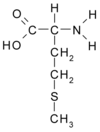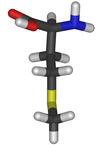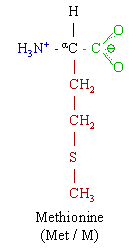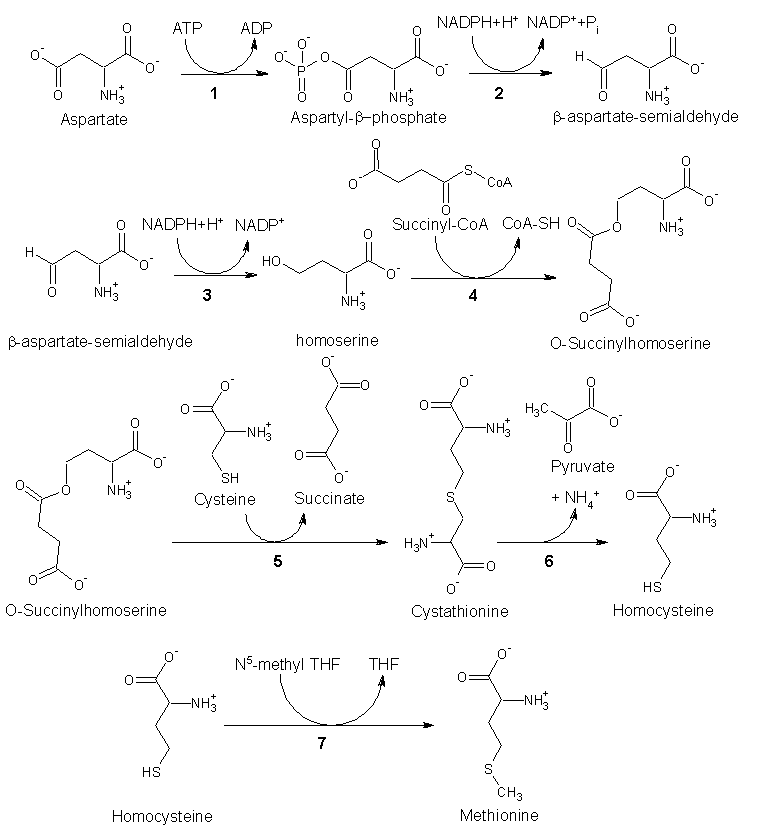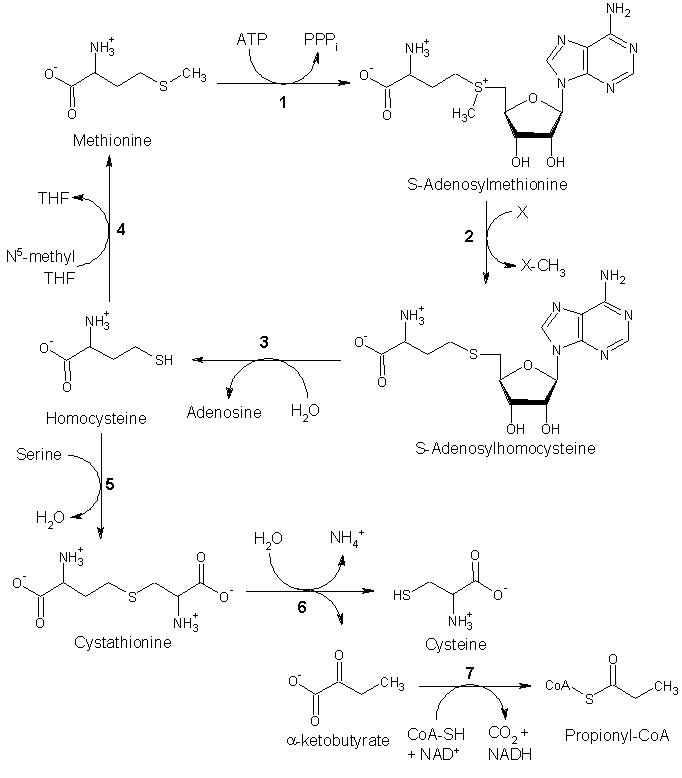Abstract
The objective of this review was to summarize 12 trials (13 comparisons) evaluating effects of zinc methionine (ZM) complex (ZINPRO®; Zinpro Corporation, Eden Prairie, MN) on lactation performance and udder health. Summarized trials were conducted in Washington (2), Colorado (2), New York, Illinois, Arkansas, Missouri, Georgia, Great Britain, Germany, and Israel. In 5 of the trials, ZM provided between 180 and 200 mg of zinc/d per head; in the remaining 7 trials (8 comparisons), ZM supplied 360 to 400 mg of zinc. In all diets, cows received additional zinc from inorganic sources, with the exception of the control diet in one of the Missouri comparisons. For statistical evaluation, each trial was considered as a block, and the treatment least squares mean within a trial was treated as an observation using a mixed model. Cows fed ZM produced more (P0.15) between treatment and control cows. Somatic cell count (SCC; 1000/mL) was reduced from 294 to 196 (P
(Key Words: Complexed Trace Minerals, Zinc, Lactating Dairy Cows, Somatic Cell Count.)
Introduction
Zinc has been recognized for several decades as indispensable for normal growth and health in animals (NRC, 2001). The recommended level of zinc in diets of lactating dairy cows has been increased recently (NRC, 1989, 2001). It is an essential component of over 300 enzymes covering all six classes of enzymes (Dibley, 2001). Zinc has biological roles that are characterized by catalytic, structural, and regulatory functions (Dibley, 2001). The metabolic action of these systems includes carbohydrate and energy metabolism, protein synthesis, nucleic acid metabolism, epithelial tissue integrity, cell repair and division, vitamin A transport and utilization, and vitamin E absorption (Miller et al., 1988; Dibley, 2001; Hunt and Groff, 9 1990; Kirn et al, 1998; NRC, 2001).
Zinc is also required for maintenance of skin integrity, stabilization of membranes, and activation of the cell-mediated immune system (Miller and Madsen, 1992). Together, stress, a reduction in immune response, and breakdown in skin integrity may deteriorate the natural defense mechanisms of the mammary gland (Miller, 1970). Low zinc status leads to low quality milk with high somatic cell count (SCC) and increased incidence of mastitis (Aguilar and Jordan, 1990; Galton, 1990).
Trace mineral availability is affected by other dietary mineral components such as iron, sulfur, calcium, and heavy metals (NRC, 2001). Research has demonstrated that specific amino acid complexes of trace minerals are more bioavailable (Wedekind et al., 1992; Paripatananont and Lovell, 1995) and have better retention (Nockels et al., 1993) than inorganic sources. Differences in bioavailability between complexed and inorganic sources of trace minerals are not static and are affected by level of antagonists (Wedekind et al., 1992; Paripatananont and Lovell, 1995) and stress (Nockels et al., 1993). The value of providing complexed zinc has been investigated in 12 research trials under varying management, environmental, and nutritional conditions. The objectives of this review were to summarize 12 trials (13 comparisons) evaluating the feeding of zinc methionine complex (ZM) to dairy cows and to examine levels of ZM supplementation on lactation performance and udder health, as measured by SCC.
Materials and Methods
Data from 12 trials (13 comparisons) were summarized in which lactating dairy cows were supplemented with ZM (ZINPRO®; Zinpro Corporation, Eden Prairie, MN) at a rate to provide a single level within the range of 180 to 400 mg/d of zinc per head. The 12 trials are all known to compare ZM directly with a control diet that contained inorganic zinc as the supplement for lactating dairy cows. The amount of inorganic zinc included in the control diets met or exceeded NRC (1989) recommendations and, in some trials, equaled the amount of zinc supplied by ZM in the treatment diet. In each trial, one level of ZM was compared to a control diet. Trials were included even though feeding management, environmental conditions, and nutritional status might have varied. Research trials summarized were conducted in Washington (Kincaid et al., 1984, 1985), Colorado (Aguilar et al., 1988; Aguilar and Jordan, 1990), New York (Galton, 1990), Illinois (Moore et al, 1989), Arkansas (Kellogg et al., 1989), Missouri (2 comparisons, Jones, 1995), Georgia (Smith et al., 1999), Great Britain (Wealsby, 1985), Germany (Anderson and Leon, 2000), and Israel (Schwimmer and Braun, 2001).
The average number of cows assigned to the studies was 56, with the smallest study allocating 16 cows and the largest study allocating 98 cows (Table 1). Recombinant bovine somatotropin was not administered in any of the studies. all studies, except the Missouri trials, included all multiparous or both multiparous and primiparous cows (Table 1). Average duration of the treatment period was 170 d and included the prefresh period in one Washington trial and the whole dry period in the German and Georgia trials. Cows in the Colorado and Israel studies were milked three times daily (Table 1). all studies were conducted in moderate to high producing dairy herds (24.2 to 38.9 kg/d milk production). Studies conducted in the United States and Israel contained Holstein-Friesian dairy cows; the British trial contained British Friesian cows.
Ingredient composition of 7 of the 12 trials is reported in Table 2. Exact ingredient composition of trial diets was not reported in one Colorado trial or in the New York, Great Britain, Israeli, and Missouri studies. Diets were composed of normally occurring ingredients and were indicative of those commonly found in the dairy industry. Total zinc content of the diets fed in 9 of the 12 trials is reported in Table 3, as three trials only reported supplemental zinc, not total dietary intake. In five of the trials, ZM supplied 180 to 200 mg of zinc/d per head; in the remaining seven studies, ZM supplied 360 to 400 mg of zinc/d per head. The objective of each trial was to supplement ZM in addition to inorganic zinc fed in the diet typically used in that herd. The control diet in one of the Missouri comparisons, the German study, the New York study, and one of the Colorado studies did not meet current NRC (2001) recommendations for zinc, but exceeded earlier recommendations for zinc by the NRC (1978, 1989). Both control and treatment diets in the Illinois study were below current NRC (2001) recommendations for zinc. all other diets met or exceeded NRC (2001) recommendations for zinc. It should be noted that all studies were formulated using ear lier NRC 7 (1978 or 1989) zinc recommendations and, therefore, would have been below NRC (2001) recommendations. Zinc requirements using NRC (2001) recommendations were calculated for a lactating dairy cow, 42 mo of age, second lactation, 658 kg BW, 680 kg mature BW, 110 d in milk, 317 .7 kg daily milk yield, 3.48% milk fat, 2.91% milk true protein, 22.6 kg DMI, and default environmental conditions. Dry matter intake was not evaluated because cows were group fed, and DMI were not reported.
Production and udder health measures were not reported in all studies. Data from the New York and German studies included only SCC. The Arkansas and Georgia studies did not report SCC.
Statistical analysis was conducted by designating the trial by treatment least square means as the experimental unit, thereby giving equal weight to each individual study. Experimental units were blocked on trial and tested using the residual block by treatment effect as the error term. Thus, effects included in the model were block, a random effect, treatment, and fixed effect, and all were analyzed using the PROC MIXED procedure of SAS (Littell et al., 1996; Kellogg et al., 2003). Significant treatment effects were noted at P0.05 and P
Results and Discussion
Summary of all 12 Trials. Individual trial performance results are presented in Tables 4, 5, and 6. Cows fed ZM produced, on average, more total milk (P7.06% in the 11 comparisons reporting milk production. Milk production response was independent of level of production as milk production increased even in high producing herds. In the two Colorado studies (Aguilar et al., 1988; Aguilar and Jordan, 1990), milk yield was increased from 36.0 to 38.1 and from 35.4 to 37.9 kg/d per cow, respectively, for cows receiving ZM.
Milk composition with regard to percentage of fat and protein was not significantly affected by ZM supplementation (Table 7). Production of energy-corrected milk (ECM) and 3.5% fat-corrected milk (FCM) were increased (P
Increases in milk production and components can be partially attributed to improved udder health. Somatic cell count (1000/mL) was reduced from 294 to 196 (P=OOOl) by the addition of ZM to the lactation diets. Thus reduction translates to a 33.3% reduction in SCC. Dibley (2001) reported that zinc plays an integral role in immune function by activating T-lymphocyte responsiveness, thus impacting the effectiveness of somatic cells within the mammary gland.
Level of Supplementation. In seven of the trials, ZM was supplemented at 360 to 400 mg of zinc/d per head. Several of the earlier trials (Kincaid et al, 1984, 1985; Wealsby, 1985; Moore, 9 199 89; Aguilar and Jordan, 1990) evaluated ZM at the level of 180 to 200 mg zinc/d per head. Results from seven studies conducted at 360 to 400 mg of zinc from ZM are reported in Table 8. Supplementing lactating dairy cows with the greater level of ZM resulted in an increase of 1.2 kg of milk (32.4 vs 31.2 kg) (P
The magnitude of SCC reduction was enhanced when cows were supplemented at the greater level of ZM. Somatic cell count (1000/mL) was reduced by 42.6% (from 298 to 171 cells) with the elevated ZM treatments. There are several plausible means by which increasing zinc status reduces SCC. Zinc is important in maintenance of health and integrity of epithelial tissue, such as skin (teats) and mammary tissue, because of its role in cell division and protein synthesis (Cook-Mills and Fraker, 1993). Zinc deficiencies have been shown to reduce cellular and humoral immune responses (Cook-Mills and Fraker, 1993). Reduced immune function, resulting from a zinc deficiency, is attributed to decreased cellmediated immune response and natural killer cell activity, atrophy of the spleen and thymus, and decreased T-dependent and independent antibody-mediated responses (Wirth et al., 1984). Possibly, an additional mode of action for zinc-reducing SCC is related to zinc's role in keratin formation. Zinc is required for the incorporation of cystine into keratin (Moynahan, 1981). The keratin lining of the teat canal entraps bacteria and prevents their upward movement into the mammary gland (Cross and Parker, 1981; Nickerson, 1985, 1990). Approximately 40% of the keratin lining in teat canals of Holstein dairy cattle is removed during the milking process, thus requiring continuous regeneration. Capuco et al. (1992) estimated that approximately 1.3 mg of keratin must be regenerated during the inter-milking period. Results from the study conducted at the University of Missouri lend credence to the theory that reduced SCC is due to increased keratin synthesis and improved immune function (Jones, 1995). These researchers initially collected more keratin from teat canals of cows fed ZM than from cows fed an equivalent amount of zinc in the form of zinc oxide. However, because of the time required to regenerate keratin, there was no difference in amount of keratin collected from cows at subsequent collections. When cows in that same study were challenged with Escherichia coli, cows fed ZM recovered more quickly from the bout with E. coli mastitis than cows fed zinc oxide, as evidenced in numerically greater milk production and DMI for cows fed ZM (Jones, 1995). Prior to the bacterial infection, cows fed ZM produced a similar level of milk as cows fed zinc oxide, but tended to produce milk with a lesser SCC (Jones, 1995). Galton (1990) reported that cows supplemented with ZM had a similar number of incidents of intramammary infections, but the severity and duration were reduced as noted by reduced linear SCC. Swelling of the mammary gland increases stress and potential for additional mammary infections. Although not reporting somatic cell scores, Campbell and Miller (1998) indicated that first lactation heifers had less udder edema when supplemented with an additional 800 mg zinc, 400 mg per head from ZM, during late gestation.
Claw (Hoof) Integrity. Improvements in lactation performance can be partially attributed to reduced SCC, but may also be due to improved claw integrity of hoof tissue. Growth, wear, and quality of cow's claws (hooves) were measured precisely in the Illinois State University trial (Moore, 1989). Claw growth and wear were similar between treatment and control animals, but cows fed ZM had improved (P
Implications
This summary of 12 trials (13 comparisons) indicates that ZM improves lactation performance and production of milk components and reduces milk SCC in lactating dairy cows. Reduction in SCC was enhanced when ZM was fed to provide > or =360 mg zinc/ d per head. Supplementation of dairy cows with ZM positively influences claw integrity and, thus, may have affected lactation performance. Improvements in lactation performance, reduction in SCC, and improvements in claw integrity were produced under varying management, housing, nutritional, and environmental conditions.
Literature Cited
Aguilar, A. A., and D. C. Jordan. 1990. Effects of zinc methionine supplementation in high producing Holstein cows early in lactation. In Proc. 9 29th Annu. Mtg., Louisville, KY. p 187. Natl. Mastitis Council, Arlington, VA.
Aguilar, A. A., M. Kujawa, and J. D. Olson. 1988. Zinc methionine supplementation in lactating dairy cows. In Proc. 27th Annu. Mtg., Reno, NV. p 119. Natl. Mastitis Council, Inc., Arlington, VA.
Anderson, R., and L. Leon. 2000. German dairy study reaffirms ZINPRO's benefit in lowering somatic cell counts. Tech. Bull. TB D-4021. Zinpro Corp., Eden Prairie, MN.
Brazle, F. K., 1993. The effect of zinc methionine in a mineral mixture on gain, and incidences of footrot on steers grazing native grass pastures. J. Anim. Sei. 71(Suppl.l):40 (Abs.).
Campbell, M. H., and J. K. Miller. 1998. Effect of supplemental dietary vitamin E and zinc on reproductive performance of dairy cows and heifers fed excess iron. J. Dairy Sei. 81:2693.
Capuco, A. V., S. A. Bright, J. W. Pankey, D. L. Wood, R. H. Miller, and J. Britman. 1992. Increased susceptibility to intramammary infection following removal of teat canal keratin. J. Dahy Sei. 75:2126.
Cook-Mills, J. M., and P. J. Fraker. 1993. The role of metals in the production of toxic oxygen metabolites by mononuclear phagocytes. In Nutrition Modulation of the Immune Responses. S. Cunningham-Rundles (Ed.). Dekker, New York, NY.
Dibley, M. J. 2001. Zinc. In Present Knowledge in Nutrition. (8th Ed.). B. A. Bowman and R. M. Russell (Eds.), p 329. Int. Life Sei. Inst. Press, Washington, DC.
Cross, R. F., and C. F. Parker. 1981. Oral administration of zinc sulfate for control of ovine foot rot. J. AVMA 178:704.
Gallon, D. M. 1990. Mastitis control. In Proc. Sem. Zinc Methionine Supplementation for Dairy Cattle. Zinpro Corp., Eden Prairie, MN.
Hunt, S. M., and J. L. Groff. 1990. Advanced Nutrition and Human Metabolism. West Publ. Co., St. Paul, MN.
Jones, C. A. 1995. Effect of zinc source on zinc retention and animal health. M. S. Thesis. Univ. of Missouri, Columbia.
Kellogg, D. W., J. M. Rakes, and D. W. Gliedt. 1989. Effect of zinc methionine supplementation on performance and selected blood parameters of lactating dairy cows. Nutr. Rep. Int. 40:1049.
Kellogg, D. W., M. T. Socha, D. J. Tomlinson, and A. B. Johnson. 2003. Review: Effects of feeding cobalt glucoheptonate and metal specific amino acid complexes of zinc, manganese, and copper on lactation and reproductive performance of dairy cows. Prof. Anim. Sei. 19:1.
Kim, E.-S., S. K. Noh, and S. I. Koo. 1998. Marginal zinc deficiency lowers lymphatic absorption of a-tocopherol in rats. J. Nutr. 128:265.
Kincaid, R. L., A. S. Hodgson, R. E. Riley, Jr., and J. D. Cronrath. 1985. Zinc supplementation as zinc-methionine and zinc oxide on milk production and measures of mastitis in early post-partum cows. Tech. Rep., Zinpro Corp., Eden Prairie, MN.
Kincaid, R. E., A. S. Hodgson, R. E. Riley, Jr., and J. D. Cronrath. 1984. Supplementation of diets for lactating cows with zinc oxide and zinc methionine. J. Dairy Sei. 67 (Suppl.l):103.
Littell, R. C., G. A. Milliken, W. W. Stroup, and R. D. Wolfinger. 1996. SAS System for Mixed Models. SAS Inst, Inc., Gary, NC.
Miller, J. K., N. Ramsey, and F. C. Madsen. 1988. The trace elements. In The Ruminant Animal. Prentice Hall. D. C. Church (Ed.). p 342, Prentice-Hall, Englewood Cliffs, NJ.
Miller, J. K., and F. C. Madsen. 1992. Trace minerals. In Large Dairy Herd Management. H. H. Van Horn and C. J. Wilcox (Eds.), p 297. Amer. Dairy Sei. Assoc., Champaign, IL.
Miller, W. J., 1970. Zinc nutrition of cattle: A review. J. Dairy Sei. 53:1123.
Moore, C. L, P. M. Walker, M. A. Jones, and J. M. Webb. 1989. Zinc methionine supplementation for dairy cattle. Trans. Illinois Acad. Sei. 82:99.
Moynahan, E. J. 1981. Acrodermatitis enterpathica and the immunological role of zinc. In Immunodermatology. B. Safai and R. A. Good (Eds.), p 437. Plenum Medical Book Co., New York, NY.
NRC. 1978. Nutrient Requirements of Dairy Cattle. (5th Rev. Ed.). National Academy Press, Washington, DC.
NRC. 1989. Nutrient Requirements of Dairy Cattle. (6th Rev. Ed.). National Academy Press, Washington, DC.
NRC, 2001. Nutrient Requirements of Dairy Cattle. 7 (7th Rev. Ed.). National Academy Press, Washington, DC.
Nickerson, S. C. 1990. Defense mechanisms of the cow. In Proc. 9 29th Annu. Mtg., Louisville, KY. p 157. Natl. Mastitis Council, Arlington, VA.
Nickerson, S. C. 1985. The teat's role in mastitis prevention. In Proc. 24th Annu. Mtg., Reno, NV. p 18. Natl. Mastitis Council, Arlington, VA.
Nockels, C. F., J. DeBonis, and J. Torrent. 1993. Stress induction affects copper and zinc balance in calves fed organic and inorganic copper and zinc sources. J. Anim. Sei. 71:2539.
Paripatananont, T., and R. T. Lovell. 1995. Chelated zinc reduces the dietary zinc requirement of channel catfish, Ictalurus pi/nctatiis. Aquaculture 133:73.
Schwimmer, A., and A. Braun. 2001. ZINPRO improves milk production, somatic cell count in Israel trial. Tech. Bull. TB D-4002. Zinpro Corp., Eden Prairie, MN.
Smith, M. B., H. E. Amos, and M. E. Froethschel. 1999. Influence of ruminally undegraded protein and zinc methionine on milk production, hoof growth and composition, and selected plasma metabolites of high producing dairy cows. Prof. Anim. Sei. 15:268.
Wealsby, W. J., 1985. The influence of ZINPRO 100 on the incidence of foot lesions and lameness in dairy cows. Tech. Rep. TB-D-8601, Zinpro Corp., Eden Prairie, MN.
Wedekind, K. J., A. E. Hortin, and D. H. Baker. 1992. Methodology for assessing zinc bioavailability: Efficacy estimates for zinc-methionine, zinc sulfate and zinc oxide. J. Anim. Sd. 70:178.
Wirth, J. J., P. J. Fraker, and F. Kierszenbaum. 1984. Changes in the levels of marker expression by mononuclear phagocytes in zinc deficient mice. J. Nutr. 114:1826.
D. W. KELLOGG*,1, PAS, D. J. TOMLINSON[dagger]; PAS, M. T. SOCHA[dagger], PAS, and A. B. JOHNSON[dagger], PAS
* Department of Animal Science, University of Arkansas, Fayetteville 72701 and [dagger] Zinpro Corporation, Eden Prairie, MN 55344
1 To whom correspondence should be addressed: wkellogg@uark.edu
Copyright American Registry of Professional Animal Scientists Aug 2004
Provided by ProQuest Information and Learning Company. All rights Reserved

